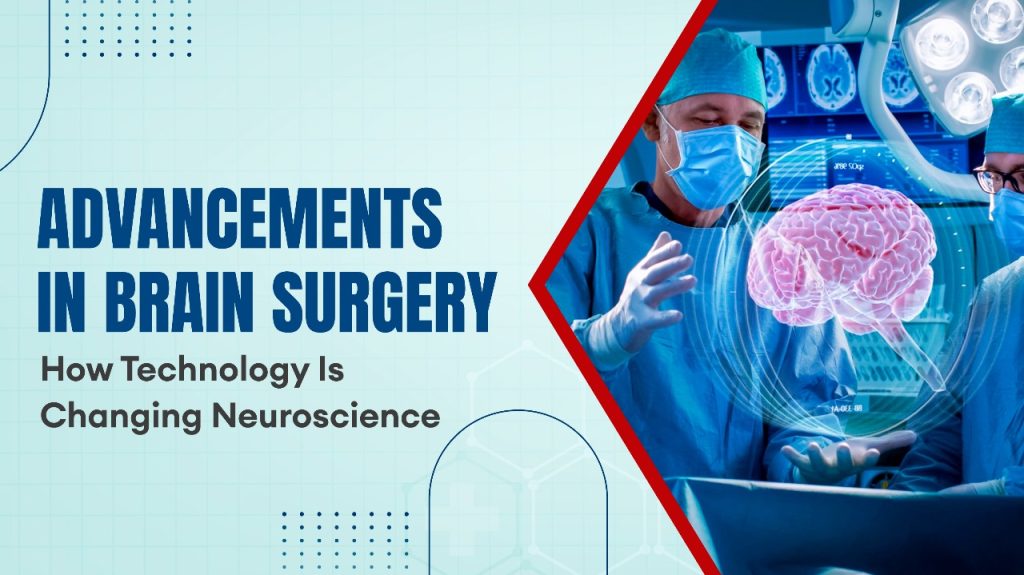Medical technology now extends possibilities in brain surgery to levels beyond previously practiced in this complex field. Modern medical technology combines robotic assistance with imaging systems to achieve minimally invasive yet precise surgery that lowers the risk for patients. Patients experience improved outcomes together with fewer surgical complications because innovative things in healthcare practice continue to advance. New navigation technology combines with precise radiation delivery to enhance neurological treatments of brain diseases and epilepsy disorders. The modernization of brain surgery advancements with technological innovations creates a radical shift that will transform neuroscience in the future.
Stereotactic Radiosurgery: Targeted Treatment with Less Risk
Modern medical technology ended the era of open brain surgeries, which was followed by radiation therapies that harmed healthy tissues. Tumor accuracy during stereotactic radiosurgery enables high-dose radiation delivery to the target area while preserving the integrity of surrounding healthy tissue. Today\’s patients can skip extensive recovery periods because they avoid facing severe side effects such as hair loss or skin damage. Research findings have expanded the application scope of stereotactic neurosurgery to treat different brain tumors so that more patients now obtain treatment without open surgical interventions.
Neuro-Navigation: Precision in Brain Tumor Removal
The removal of tumors from the brain needs perfect accuracy because minimal mistakes will impact essential capabilities, including speech capability and motor function control. The computer-assisted neuronavigation system generates real-time surgical navigation data through MRI or CT scan imaging. Surgical teams utilize this approach to treat otherwise inaccessible tumors that were formerly beyond surgical reach. Through its precise capabilities, neuronavigation strengthens brain surgical safety while reducing adverse effects and improving tumor removal success rates of vital brain functions.
Fluorescence-Guided Surgery: Seeing the Invisible
The main difficulty in performing brain tumor surgical operations is to distinguish healthy tissue from cancerous tissue. The surgical capability of fluorescence-guided surgery addresses this problem through blood injections of special fluorescent dye. Under microscope observation with specialized filters, malignant cells show luminescence because they absorb the dye injected into the bloodstream. The surgical team can identify tumor margins better thanks to the dye so they can extract the affected tissue more precisely and protect surrounding healthy brain cells. The process of intraoperative angiography also employs a dye procedure that creates instant blood vessel illumination to safeguard essential brain structures. Such brain surgery advancements help doctors attain superior outcomes by maintaining vital brain operations.
Awake Craniotomy: Operating with Patient Awareness
Certain brain tumors emanate from regions that control speech, movement, and vision, respectively. The surgical technique poses risks to these important operational functions, yet awake craniotomy surgery constitutes a safer surgical alternative. The surgical patient stays conscious to interact with the surgeon through the treatment process as the physician performs the tumor removal. Permanent real-time feedback allows doctors to observe neural function and speech and movement functions until problems surface. The method allows surgeons at multi-specialty hospital in Khalilabad to keep vital functions safe while extracting the largest possible tumor amount.
Intraoperative Imaging: Real-Time Brain Surgery Guidance
During brain surgery, surgeons require fast decision-making, and intraoperative imaging helps to provide live procedural data for their guidance. Doctors use MRI and CT scans along with ultrasound technology during brain surgery procedures to display brain anatomy, which allows complete tumor clearance and helps discover potential unexpected matters. The technique lowers the necessity of additional surgical interventions while improving surgical accuracy. Through its use of EEG electrodes, brain mapping determines exact seizure areas for patients during epilepsy surgical procedures. The surgical instrumentation enables neurosurgeons to conduct intricate operations with higher accuracy, which produces superior results together with shortened patient recuperation periods.
Conclusion
Brain surgery evolution stands as proof that technological advances transform the field of neuroscience. The recent medical breakthroughs in non-invasive radiosurgery and real-time imaging and guided procedures enhance treatment capabilities with simultaneous risk reduction and shorter recovery periods. Modern medical science provides patients with previously unheard-of safe and exact treatment methods that used to be out of reach. Anyone seeking brain scanning services should look for Kalpit Healthcare– a multi-specialty hospital in Khalilabad because they provide access to experienced professionals who support patients throughout their journey.



